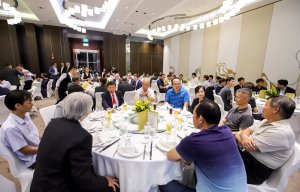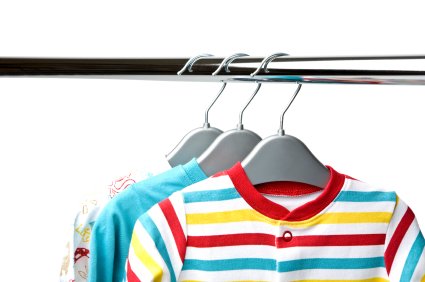
Karl Mayer celebrates partnerships at Vietnam event
Between 2016 and 2020, production is forecast to rise by an average of 12-14% per annum.

14th June 2017
Knitting Industry
|
UK
Between 2016 and 2020, production is forecast to rise by an average of 12-14% per annum. Exports are expected to rise by 15% per annum and, as a result, they are set to reach US$50 billion by 2020 -- up from US$28 billion in 2016.
To achieve these targets, hownever, a number of policies will need to be implemented. For a start, Vietnamese companies will need to shift their in focus away from CMT (cut, make and trim) garment production where they act merely as subcontractors for foreign firms. Instead, they will need to produce more garments on a so-called fob (free on board) basis and deal directly with foreign buyers.
Also, only a small percentage of Vietnamese clothing is made from domestically produced fabric and this needs to increase significantly. Additionally, there needs to be a shift from producing lower end clothing items to producing high quality, high value fashion items. There also needs to be a move towards more efficient sourcing through vertical integration, as well as an improvement in productivity by enhancing research, training and development.
The industry has already begun to make significant investments in its textile manufacturing facilities. For example, Vietnam was the second biggest investor in shuttleless looms among member countries of the Association of South East Asian Nations (Asean) during 2006-15. Moreover, it was the biggest investor among these countries in ring spindles and open-end rotors. There has also been a marked expansion in the knitting sector.
The industry’s development has been assisted by strong government support which has encouraged high levels of investment -- especially from foreign investors.
Development has also been assisted by government success in negotiating a number of free trade agreements (FTAs). Having said that, not all Vietnamese clothing exports benefit from preferential tariffs under these FTAs because many of the agreements stipulate the use of locally produced fabrics – and a large proportion of the fabrics used for clothing production in Vietnam are imported.
Vietnamese fabric production accounted for barely 15% of the clothing industry’s fabric needs in 2015. Furthermore, growth in clothing production has outpaced that of fabric production in recent years.
Another issue for the industry is that activities such as marketing and distribution are underdeveloped. Consequently, the industry relies heavily on the help or participation of foreign companies to carry out these activities.
However, the position is beginning to change. The government is promoting opportunities for the textile and clothing industry by pursuing a programme of specialisation and modernisation. Its objective in doing so is to produce more items with greater added value, and it is significant that a number of internationally recognised brands are increasingly active in the country -- including Adidas, Puma, Nike and Gap.
There is also scope for clothing producers to enhance their product offerings by developing their own brands and becoming original design manufacturers (ODMs) rather than mere subcontractors. However, much will depend on nurturing local design talent and establishing brand names which have a resonance with consumers in sophisticated Western markets.
Significant opportunities will arise for supplying Vietnam’s growing domestic clothing market. The market is being powered by a young age profile, increasing urbanisation, rising personal disposable incomes and continued strong economic growth. In fact, the country’s retail sales are reported to be rising by 20% per annum. Moreover, consumer spending on clothing is the second highest category of expenditure, being exceeded only by food purchases.
‘Prospects for the textile and clothing industry in Vietnam’ was published by the global business information company Textiles Intelligence and can be purchased by following the link below:
Prospects for the textile and clothing industry in Vietnam
Other recently published reports from Textiles Intelligence include:
World textile and apparel trade and production trends: Egypt, Morocco, Tunisia and Turkey
Survey of the European fabric fairs for spring/summer 2018

Business intelligence for the fibre, textiles and apparel industries: technologies, innovations, markets, investments, trade policy, sourcing, strategy...
Find out more